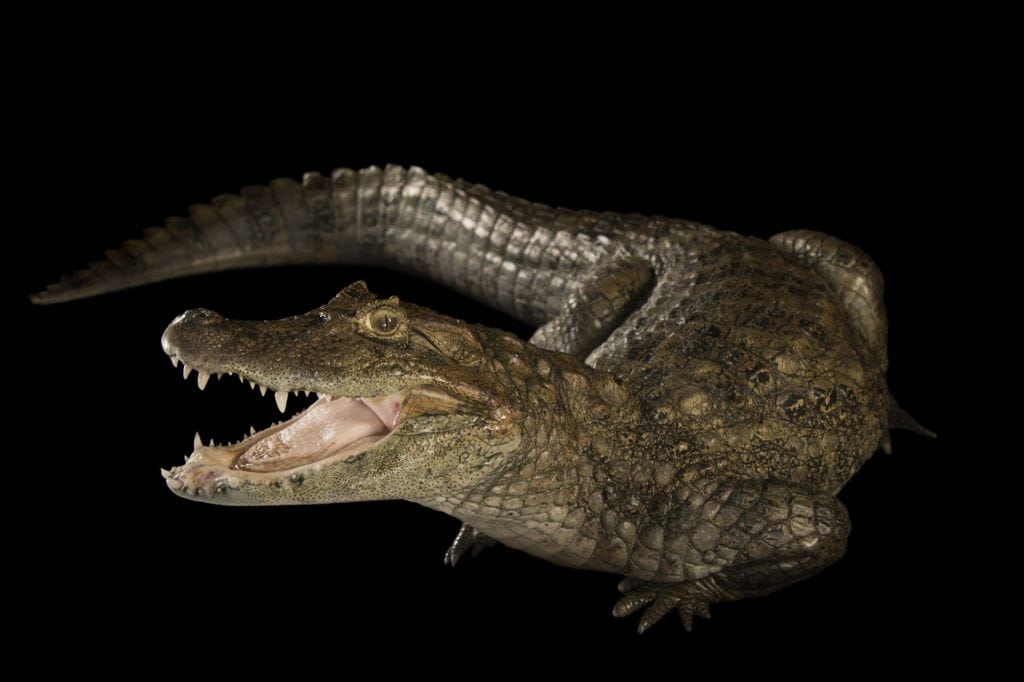It specialises in aquatic (ampullarid) snails, but will also take a wide variety of other invertebrates and small vertebrates (e.g. fish, amphibians). Larger animals are able to take larger prey and their jaws are well-suited to crushing turtle shells.
The incidence of fluke parasites in cattle has increased in areas where the Broad-Snouted Caimans used to be common. It has been suggested that the decline of the caiman has resulted in increased number of snails – an intermediate host for the parasites.

Captive breeding in zoos have shown that this species builds a mound nest into which 20 to 60 eggs are usually laid. In the wild, nests will often be built on isolated river islands.
Nest construction occurs during the rainy season and may be assisted by the male. Eggs are reported to be laid in two layers, which may help to create a slight difference in temperature between the two layers and a slightly different sex ratio in the embryos. Incubation period is approximately 70 days.
Females have been observed opening the nest during hatching and assisting the young to the water, where they will be guarded for an indeterminate period by either one or both parents.















